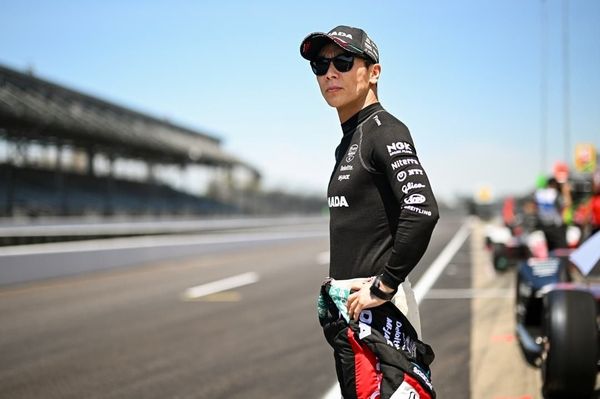
The second-youngest team in the NBA, the Oklahoma City Thunder, just clinched the top seed in a feverishly competitive Western Conference. A Minnesota Timberwolves squad, led by 22-year-old phenom Anthony Edwards, are hot on their tails. But on the bottom end of the bracket, and the other end of the age spectrum, await surefire first-ballot Hall of Famers like Kevin Durant, Stephen Curry, Jimmy Butler and LeBron James.
Yes, their respective teams had up-and-down seasons that left them with unfavorable seedings entering the NBA postseason, which soft-launches on Tuesday night with the play-in tournament. And no one would argue that the future isn’t looking bright in the association with stars like Edwards and Shai Gilgeous-Alexander in full bloom. But the youngsters in Oklahoma and Minnesota would be the first to tell you: the NBA’s old guard is still waiting in the wings, cleaver in hand.
Heading into the playoffs, and consistently throughout the regular season, there’s been much ado about which stars among a very impressive younger NBA class will be the next face, or faces, of the league. It’s partially bad-faith hand-wringing to boost television ratings, to be sure. But it’s also an understandable exercise, as supernovas like Curry and James, who have been buoying the league longer than some fans have been sentient, are on their second (or even third, in James’ case) decades of NBA stardom.
But the whole thought exercise might prove to be not just premature, but a robbery of the pure enjoyment of watching some truly special years of singular athletes’ careers by preemptively throwing proverbial dirt on them. These older players may not be reaching the heights of their absolute statistical peaks, but the data is clear: they’re still really, really good.
“Older” NBA players (which, for contextual purposes, we’ve categorized as players over 33, as humbling of a distinction as that is for the rest of us) are showing a flat out remarkable output this season. There are plenty of contributing factors therein, one of the chief among them being advances in training, nutrition and sports medicine toward extending a professional athlete’s career, should they choose. The Guardian spoke to several NBA players and coaches about what could be causing this surge in productivity by the elder statesmen of the league.
“I think what’s different is players have the means to take care of their bodies year round,” Golden State Warriors head coach Steve Kerr said. “Players have gotten smarter and they’re taking better care of their bodies, and we’re smarter about trying to help them lengthen their careers.” He notes that other sports, too, have benefitted. “In tennis, Björn Borg played until he was about [26 years old]. And now, Nadal, Djokovic, they’re all still going. We just know a lot more now, and players have the means, because of the economics, to keep their bodies in great shape for as long as possible.”
Chris Paul, who is often mentioned among the very best point guards to grace the hardwood and has famously credited a plant-based lifestyle with helping him extend his own career, echoed Kerr’s sentiments. “I mean, there’s so much that’s changed in recovery,” said Paul, who turns 39 next month. “Just in the people who went before us teaching us how to take care of your body, constantly training, [the focus on] food, nutrition.”
It’s interesting that, despite the measurable strides in the science of performance, the sustained greatness of this particular class of superstar seems to represent more of a spike than a steady trend. It indicates that rather than a natural progression of where the league is going, that, perhaps, we are living in something of a golden era of older NBA talent. This group in particular may be drafting the map for potential future copycats rather than existing as points on a pre-existing upward trajectory.
Warriors power forward Draymond Green, a 12-year NBA veteran who has played against and alongside all of these path-forgers, credits them for the potential sea change.
“You watch a guy like Bron, who has taken it to another level, and then you know it’s possible. Then there’s a blueprint. You watch a guy like Steph, who’s also now taken it to another level, and there’s a blueprint,” he told the Guardian. “You start to get to 33, 34, before and you’re like, ‘Alright, I got a year or two left.’ That’s not the thinking anymore. The thinking is, now, I can go much longer. And that’s due to guys like Steph and LeBron, who are playing at this crazy level.”
The thing about blueprints, though, is that those next in line to build something are under no direct obligation to follow them. It’s still yet to be determined what the next generation of superstars will look like as they age under the bright lights, or how long they’ll stay there. Having more tools at their disposal to enable longevity than some of the players of the past doesn’t in any way guarantee that they’ll elect to use them.
There were actually more players in their late 30s for certain stretches of the 1990s (when statistical outliers like Karl Malone and John Stockton were playing at a high level for longer than expected) than there are now, maybe due, in part, to the sheer fact that accumulating generational wealth took substantially longer then than it does today. And some of the league’s brightest young stars have showcased a strong desire for a life outside the spotlight, beyond basketball, in the not-too-distant future. The Nuggets’ Nikola Jokić, a 29-year-old two-time NBA MVP almost certainly in line for a third next month, is famously happiest with his horses. And the Mavericks’ 25-year-old Luka Dončić, one of the brightest young stars in the league and likely to be a close second in that very same MVP race, recently seemed incredulous at JJ Redick’s suggestion that he could possibly attempt to break LeBron James’ seemingly insurmountable all-time scoring record in an appearance on Redick’s The Old Man and the Three podcast. “No, I’m not playing that long, no chance,” Dončić said with a grin. “I’m going to have my own farm in Slovenia.”
It’s been a recurring topic on countless episodes of roundtable sports debate shows for years running, and it’s come up in nearly every Lakers post-game presser this year: When will LeBron retire? It’s an understandable question, given that James turns 40 later this year. But while the oldest player in the NBA today is aware – as he said in his own words, that he doesn’t “have much time left” before an inevitable end to his storied career – he still averaged 25.7 points, 7.3 rebounds and 8.3 assists this year: remarkably, his 20th straight year averaging over 25 points. And his 2023-24 campaign also marked the best three-point shooting season of his career, two decades on from his NBA debut. The level at which he’s playing for his age is, quite literally, unprecedented, and it’s still well above average, even by his All-Star, All-NBA-caliber standards.
Los Angeles Clippers head coach Ty Lue, who coached James to a historic championship with the Cleveland Cavaliers in 2016, told the Guardian that he attributes James’ remarkable longevity and unmatched ability to sustain his own excellence to his staggering commitment.
“Hard work, being dedicated to the game,” Lue said. “Seeing LeBron, when I was in Cleveland, we’d land at two o’clock in the morning and he’d come at 6.30am doing his corrective – activation, whatever you want to call it, every single day. And he always eats clean, eats good. When you take care of your body you can play for a long time, and I think he’s shown that.”
So if James and his peers are still playing at such an elite level, are the funerals that are already being thrown for them in the media premature? “One hundred percent, because that’s what they’re accustomed to,” Green said. “So you see a guy like LeBron at 39, even [Chris Paul] at 38, you see Steph [at 36], you see these guys, and you’re like, ‘Aw man, I see the clock ticking,’ because they’re getting up there in age. But you look at their game, and they’re playing better than some 23, 24, 25 year-olds. So I don’t think the basketball world has caught up in that aspect, to where they’re expecting guys to play that long. But not only play that long, but be as good as they are at that age, still playing at an insanely high level.”
In an effective must-win game for his Lakers last Friday in Memphis, their second-to-last game of the regular season and one that would determine the team’s chance at a much more promising eighth seed or send them plummeting to 10th, James sealed the win with a late-game steal, fast break and double-pump reverse dunk exclamation point. On the other end of the court, 19-year-old GG Jackson, a lifelong James fan and Grizzlies rookie forward, could only look on in awe.
ESPN’s Dave McMenamin asked James after the game what it felt like to take part in a play where an onlooker might not be able to guess which of the two was the teenager and which was nearing 40. “By the grays in my beard they’d probably know I’m a lot older than they think,” James said wryly. “But to be able to be on the floor, and be able to play at a high level, keep up with the young guys, keep up with the youngest guy, that’s something I take pride in. It’s an honor to be able to play this game that I love to play and play it at a high level. And be able to share the floor with my teammates, be able to share the court with rookies that’s probably watched me throughout my whole career, or they watched me in bits and pieces throughout my career, and I hope that I was able to inspire them along my journey.
“And if not, then hopefully that I can inspire them when we play against each other, or show them something, whatever. So it’s just pretty cool. It’s just an honor to be able to play this game. This game has given so much to me, obviously. I just try to give everything back to it and the people that come watch me play.”
Perhaps even more so than the meal planning, the early-morning workouts, the research and the highly skilled training staff, the true secret to player longevity is as straightforward as the will to step out on the hardwood and the true passion to play the game and play it well. As salaries rise, the necessity of a long career ebbs in the opposite direction. But for some, the motivation will always run much deeper.
For better or for worse, all things come to an end, and this era and its brightest stars won’t last forever. But the numbers don’t lie, and they tell a pretty succinct story: they’re not dead yet.







